
How to Use Track Changes in Microsoft Word
Track Changes is a key tool for proofreading in Microsoft Word. And if you want to work as a proofreader, you’ll need to know how it works. In this post, then, we’re going to run you through the basics of how to use Track Changes when editing a document in Microsoft Word.
What Is Track Changes in Word?
Track Changes is an editing tool you can use to record revisions to a document. It shows you additions, deletions, and moves, highlighting the changes in red (usually). As a proofreader, this offers a simple way to mark edits for your client when working in Microsoft Word. Rather than leaving a comment whenever you make a change, you can just use Track Changes. The customer can then go through and accept or reject as they see fit.
How to Turn on Track Changes in Microsoft Word
Using Track Changes can seem daunting, but it’s actually relatively simple once you’ve done it a few times. To turn on Track Changes, follow these steps:
- Go to the Review tab on the main ribbon.
- Click the Track Changes button.
That’s it! Word will record all changes you make to the document while you have Track Changes on.
How to Turn Off Track Changes in Microsoft Word
To stop tracking changes, all you need to do is click the Track Changes button again.
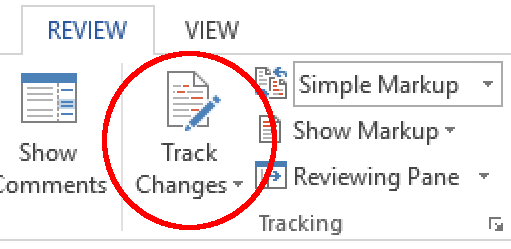
You can also toggle the Track Changes tool with the keyboard shortcut Ctrl + Shift + E in Microsoft Word for Windows (or Cmd + Shift + E in Microsoft Word for Mac).
What Are the Markup Options in Word?
You can control how Microsoft Word displays tracked changes via the markup options. You’ll find these on the Review tab in a dropdown menu just next to the Track Changes button.
The markup options available here in recent versions of Microsoft Word are:
- Simple Markup – Shows you the edited text, with changes marked via red marks in the left margin. Clicking these red marks will switch you to All Markup.
- All Markup – Shows edits in red, with deleted text also formatted with the strikethrough effect (e.g. deleted text). Formatting changes are recorded via bubbles in the right margin.
- No Markup – Displays the edited version of the document with no changes marked.
- Original – Shows the document prior to any edits being made.
We suggest using Simple Markup as a default. This lets you proofread without being distracted by red marks in the text, but you can quickly switch to All Markup to review your changes.
You can also customize how edits are displayed (e.g. the color of highlighted edits, the types of changes shown) via the Show Markup menu, which is just below the main markup options.
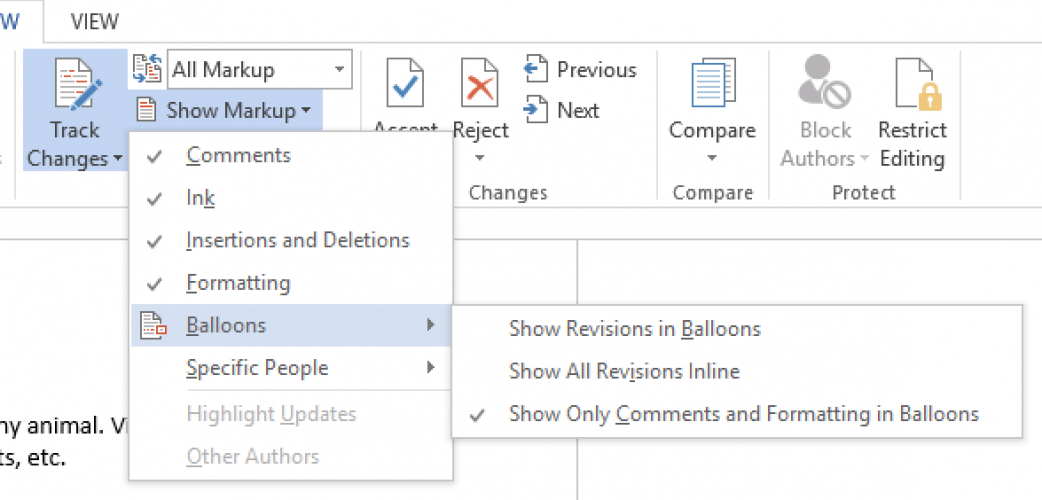
How to Accept or Reject Track Changes in Word
As a proofreader, you may need to review existing edits in Microsoft Word (e.g., if your client wants you to check changes they made while redrafting). And even if you don’t need to use the review options yourself, you may need to explain how they work for a client.
Good news, though! Reviewing edits is quite simple in Word. All you need to do is go to the Changes section of the Review tab. Your options here are:
- Previous and Next – Cycles through tracked changes.
- Accept and Reject – Accepts or rejects a selected edit.
When you accept an edit, it no longer shows up as a tracked change in the document. And when you reject an edit, the text reverts to how it was in the original version.
There is also an option to accept or reject all changes in a document at once, accessed by clicking the down arrow on the relevant button and selecting the option from the menu.
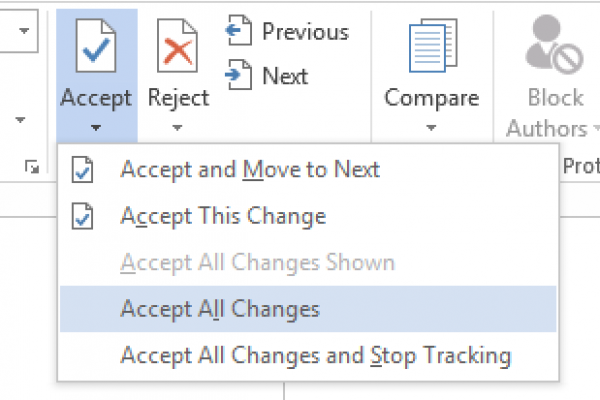
However, you should only use Accept All Changes if you’ve already checked the tracked edits.
How to Add a Comment in Microsoft Word
The other key tool in Microsoft Word that you may need to use as a proofread or editor is the commenting tool. You can use this to explain changes you’ve made, suggest further edits, or pose questions for your client.
To leave a comment in Microsoft Word, you have three options:
- Go to the Review tab on the ribbon and click New Comment.
- Right click and select New Comment from the contextual menu.
- Use the shortcut Ctrl + Alt + M.

After this, type your comment in the bubble in the right margin. If you need to edit a comment, simply select it and make any changes required.
You can also reply to existing comments in a document by clicking Reply in the comment itself.

To delete a comment, meanwhile, you can either right click and select Delete from the contextual menu or select the comment and go to Review > Comments > Delete on the main toolbar. You will also find an option to delete all comments in a document here, so make sure not to click this by accident!
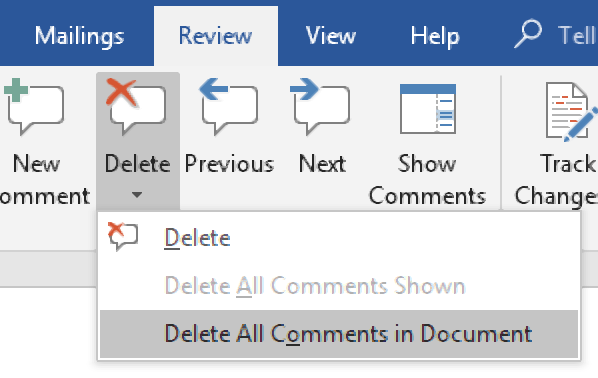
How to Track Changes in Google Docs
Some clients may prefer to use Google Docs, particularly if they are working with more than one person to create the document. Thankfully, Google Docs has a function that allows you to track the changes you make to a Google Doc. It’s called Suggesting Mode. At the top right of a Google Doc page, there is a pen icon with the word Editing beside it. Use the drop-down menu to select Suggesting.
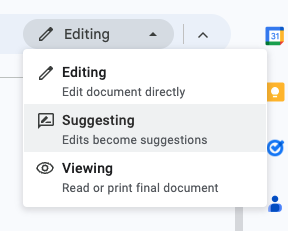
This will allow you to track your edits for your client to accept or reject.
You can read more about this process in our blog post “How to Track Changes in Google Docs.”
Becoming A Proofreader
For more about how to use Track Changes in Microsoft Word, as well as everything else you need to know as a freelance proofreader, why not give Knowadays a try? You can sign up for a free trial of our Becoming A Proofreader course today to see how it works.





Your email address will not be published.